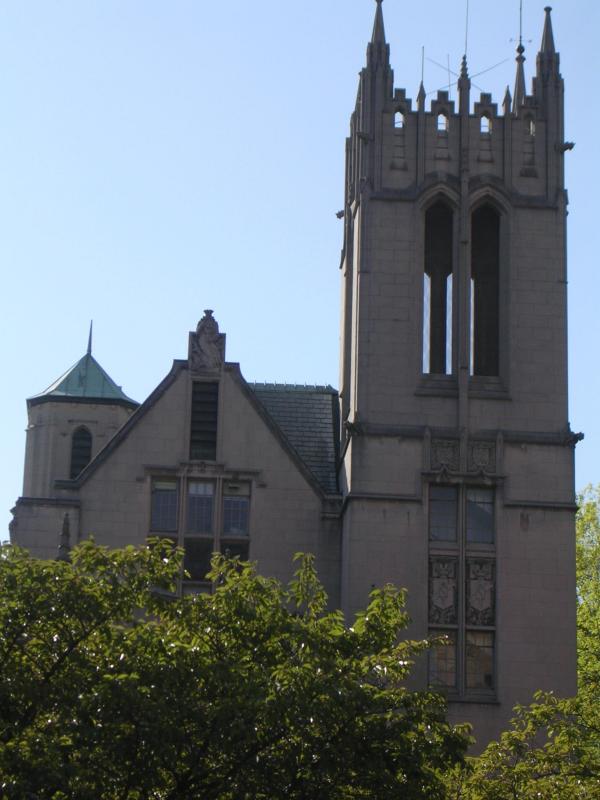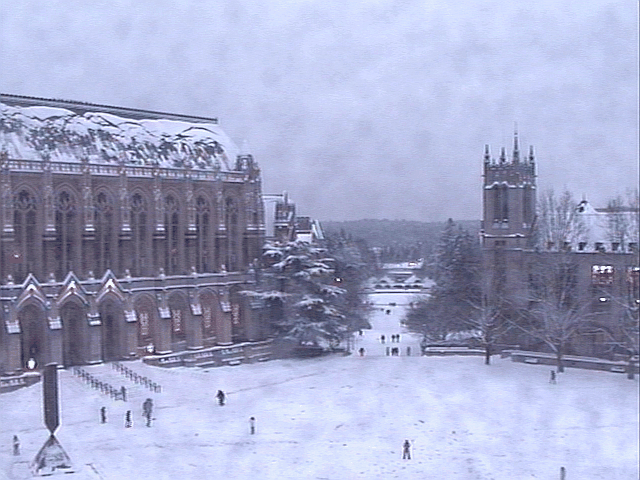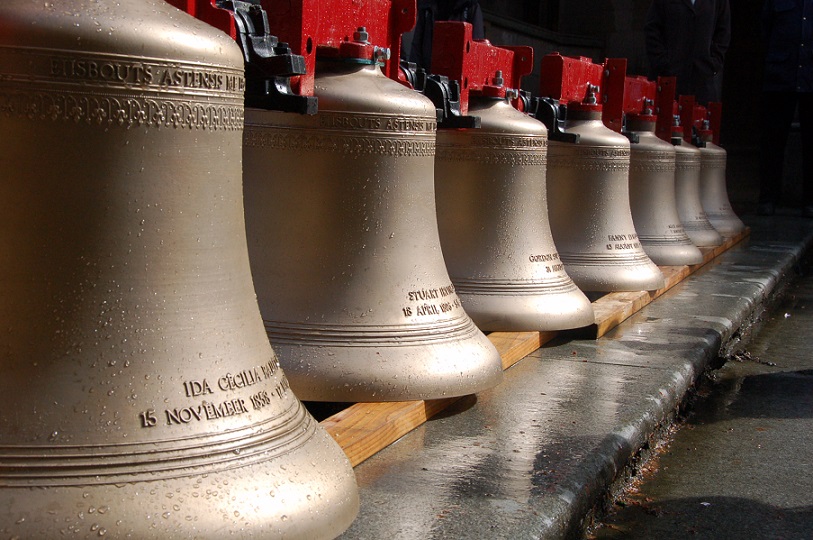Ringing Times
Generally, the bells may be heard on Friday
evenings between 8:30 - 9pm. Out of term,
the bells may also ring on Monday evenings between 8:30
-9pm.
Also, check the calendar,
as we sometimes ring quarter
peals on Saturdays or Sundays, usually between 10am
and 1pm.
Upcoming Open** Ringing
& Ringing Events
For UW Graduation and our 17th
Anniversary:
Friday 13th June - 8:30-9pm
Saturday 14th June
- 10-11am & after the ceremony
(i.e., likely from sometime after
3:30pm)
Sunday 15th - June 12-1pm
What is meant by 'OPEN' ringing? See here.
For our regular practices, see
calendar.
We also ring for special events. Upcoming events will be listed
here and on the calendar.
Red
Square is an excellent location from which to hear
the bells. Throughout the year, the
bells will be rung to celebrate university, state, and
national events. To request ringing for an event,
please contact the Tower Captain.
|
Practice Times
Our usual practice times are:
Mondays and
Fridays 7-9 pm
Most of that practice is using a simulator system and is
not audible outside the tower, but typically on Friday
evenings (and on some Monday evenings out of term), we
ring the bells open from 8:30-9pm.
If you are already a ringer, you are very welcome
to ring with us - please contact the tower captain in
advance (at both email addresses above). Sometimes
extra practices can be arranged.
Except in special
circumstances, unfortunately practices are not generally
open to non-ringing visitors, but if you are interested in
learning to ring, see below.
|
Finding us
Gerberding
Hall is on the south side of UW's Red
Square in the central UW campus, just next to
Suzzallo Library.
See here
for map.
We meet at the southeast corner of Red Square before
practices. Visiting ringers, please note the
building is locked, so please contact us before hand so we
don't miss you.
Travel to UW: UW is well served by local METRO
buses to NE Campus Parkway, the HUB, and Montlake, and the
Link
Light Rail from Capitol Hill, Downtown and Sea-Tac.
(Google maps is a good way of finding out about
transportation options). Click here
for walking routes from the bus stops to the tower. If you
drive, Pay-parking is available from UW, or on meters on
local streets (free in some areas after certain times -
read the notices carefully). For more details about
getting to the tower, see here.
|





